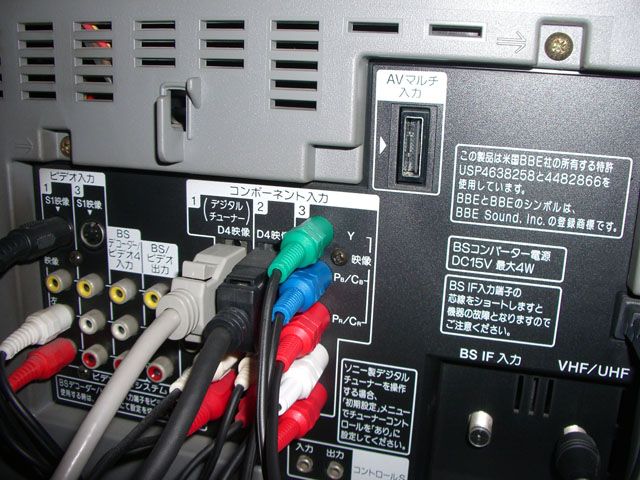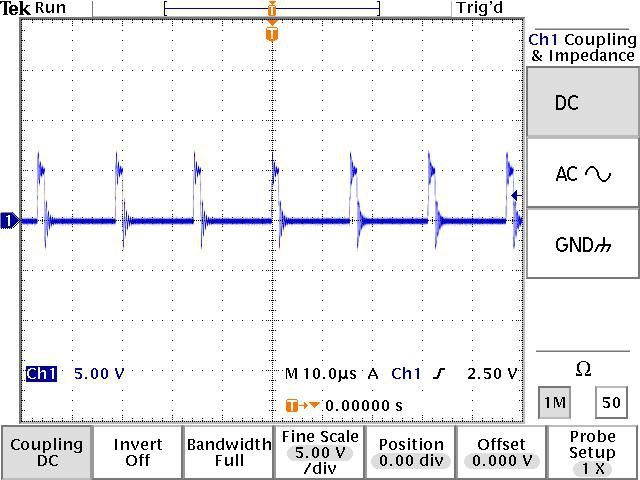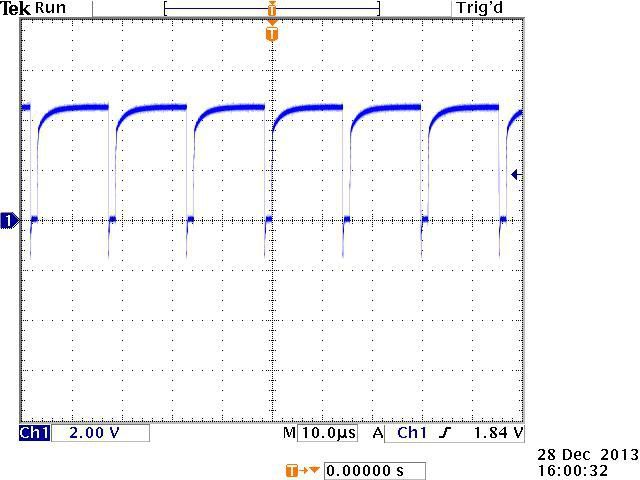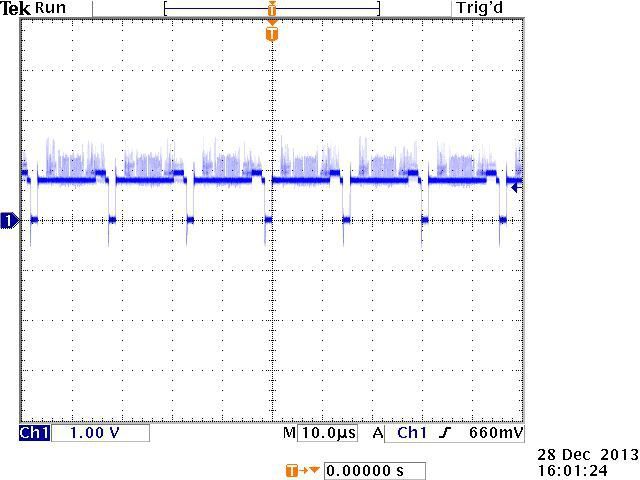Here's one for people who know a thing or two about electronics.
First, let me introduce you to my friend, the AV Multi port.

See the rectanglar input on the top middle-right? This only exists on certain Japanese Sony TVs built from the late 90s to the mid-2000s, and it is an RGB input. In fact, it is exactly the same as the AV-Out port on a Playstation console, and the only cable ever released for it has the same male head on both ends. It can even alternate between RGB and YUV - clearly to accomodate the forced YUV DVD playback of a PS2.
The cool thing is, with a hacked cable, it's perfectly possible to use this AV Multi port as a general console RGB port. I've been doing just that for years.
My current project is this: getting VGA from a laptop to work through this port. My particular set handles 480p just fine, and it should (and as you'll see, does) handle 640x480 VGA as well.
As you may know, the red, green and blue color lines in VGA are basically the same as standard TV RGB. What's different is the sync information, and it's different in three ways:
1. Horizontal and vertical sync are split into different lines, so these have to be merged.
2. The voltage is a bit higher, so there should be resistors on the line.
3. The big one - VGA sync is positive, while TV sync is negative. In other words, VGA sync pulses look like this:
___-______-______-______-______-______-___
While TV sync pulses look like this:
---_------_-----_-----_-----_-----_-----_---
So you have to invert them.
I followed the schematic on this page to do the inversion.

I think that's Spanish, and "masa" means ground. The 4070 and all of those pin numbers are one simple little IC package.
The good news is, it works. The bad news is, things get complicated from here.
First of all, as a final quirk of this AV Multi port, if you feed it sync through the composite video line, it will FORCE the video mode to 240p. Higher resolutions have to be done with sync-on-green. I found this schematic to combine the sync and the green, and used it.

Again, the good news is, it works. Finally, however, here comes the problem I am hoping you can help me fix: this added sync causes a low-level hum in the co-joined signal so that all black is tinted green.
(photo pending, sorry)
Note that this does not result in a greater intensity of green at brighter levels; white is still plain white.
So, what I need to do is get that hum out of the sync signal.
The first thing I've tried, using potentiometers, is adding resistance to the 5V line going into the 4070, and to the c-sync coming out of it before it links up with the green. In the case of the latter, it does have an effect, but as soon as the black starts looking like black, the sync drops out entirely and I get no image.
The next thing I'm going to try, I suppose, is adding as much resistance as possible to the two VGA sync signals before they enter the 4070, but somehow I'm not optimistic about that one. I think the hum is the 4070's fault. It seems too consistent to be only from the sync lines.
Does anyone have any ideas how I could filter this? I know how to use a soldering iron, and there's a great little parts shop right next to where I work, but I don't really know what to try.
Thank you!
First, let me introduce you to my friend, the AV Multi port.

See the rectanglar input on the top middle-right? This only exists on certain Japanese Sony TVs built from the late 90s to the mid-2000s, and it is an RGB input. In fact, it is exactly the same as the AV-Out port on a Playstation console, and the only cable ever released for it has the same male head on both ends. It can even alternate between RGB and YUV - clearly to accomodate the forced YUV DVD playback of a PS2.
The cool thing is, with a hacked cable, it's perfectly possible to use this AV Multi port as a general console RGB port. I've been doing just that for years.
My current project is this: getting VGA from a laptop to work through this port. My particular set handles 480p just fine, and it should (and as you'll see, does) handle 640x480 VGA as well.
As you may know, the red, green and blue color lines in VGA are basically the same as standard TV RGB. What's different is the sync information, and it's different in three ways:
1. Horizontal and vertical sync are split into different lines, so these have to be merged.
2. The voltage is a bit higher, so there should be resistors on the line.
3. The big one - VGA sync is positive, while TV sync is negative. In other words, VGA sync pulses look like this:
___-______-______-______-______-______-___
While TV sync pulses look like this:
---_------_-----_-----_-----_-----_-----_---
So you have to invert them.
I followed the schematic on this page to do the inversion.

I think that's Spanish, and "masa" means ground. The 4070 and all of those pin numbers are one simple little IC package.
The good news is, it works. The bad news is, things get complicated from here.
First of all, as a final quirk of this AV Multi port, if you feed it sync through the composite video line, it will FORCE the video mode to 240p. Higher resolutions have to be done with sync-on-green. I found this schematic to combine the sync and the green, and used it.

Again, the good news is, it works. Finally, however, here comes the problem I am hoping you can help me fix: this added sync causes a low-level hum in the co-joined signal so that all black is tinted green.
(photo pending, sorry)
Note that this does not result in a greater intensity of green at brighter levels; white is still plain white.
So, what I need to do is get that hum out of the sync signal.
The first thing I've tried, using potentiometers, is adding resistance to the 5V line going into the 4070, and to the c-sync coming out of it before it links up with the green. In the case of the latter, it does have an effect, but as soon as the black starts looking like black, the sync drops out entirely and I get no image.
The next thing I'm going to try, I suppose, is adding as much resistance as possible to the two VGA sync signals before they enter the 4070, but somehow I'm not optimistic about that one. I think the hum is the 4070's fault. It seems too consistent to be only from the sync lines.
Does anyone have any ideas how I could filter this? I know how to use a soldering iron, and there's a great little parts shop right next to where I work, but I don't really know what to try.
Thank you!
Last edited:






